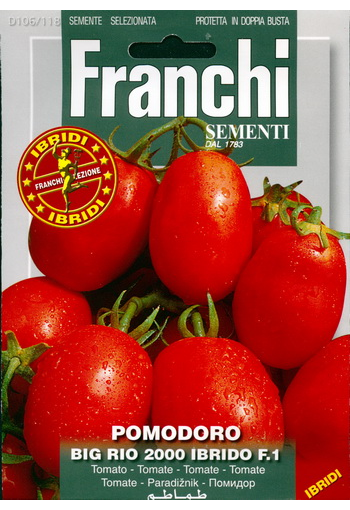The best fruits for canning in their own juice.
Medium early hybrid for open ground and film greenhouses.
Plum-shaped fruits, dense, fleshy, red. Fruit weight 100-140 g.
Differs in excellent fruit consistency. Resistant to fusarium and verticillium wilt.
* When tomatoes are overcome by cladosporiosis.
Cladosporiosis is a common fungal disease in unheated greenhouses, especially in spring and in the second half of summer.
It is difficult to control because the pathogen accumulates both in the soil and in the greenhouse structures. And the conditions for the development of the disease are favorable due to the high humidity in the greenhouse.
Although plants in open ground are affected by cladosporiosis, here this disease is hardly noticeable and does not cause harmful harm.
Symptoms of tomato cladosporiosis appear first on the lower leaves and then spread upward throughout the plant. On the upper side of the leaves, round yellowish spots appear between the veins, which later acquire a reddish-brown colour. On the underside of the leaf, on the spots, first a light gray and then a brownish-brown velvety coating, consisting of fungal spores, forms. Later it moves to the upper side of the leaves. The leaves gradually curl and dry out.
The fruits are also affected by the disease: tomatoes do not ripen and often rot.
How to combat Cladosporiosis blotch?
There are several ways to cope:
- compliance with agricultural cultivation techniques;
- treatment during the growing season with biological or chemical preparations;
- selection of a tomato hybrid resistant to cladosporiosis.
Agrotechnical practices:
* Maintain distances between plants when planting (35-40 cm). Ventilation to reduce humidity. Optimum temperature + 20°C. Water in the morning or afternoon. Improving air circulation by removing the lower leaves of plants.
* Mulching beds.
* Careful removal of plant residues and disinfection of greenhouses at the end of crop rotation, and periodic disinfection of garden tools.
Treatment with biological preparations: Fitosporin, Alirin, Trichoderma veride, etc.
Or chemicals: Hom, Ridomil-Gold, Revus Top, etc.











